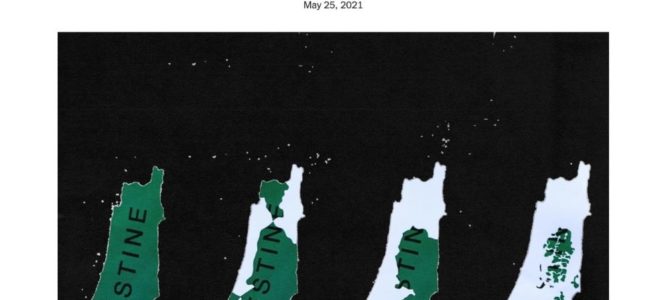The New York Times defended an erroneous anti-Israel map and pro-Palestinian rhetoric used by one of its guest writers as “art” this week after readers pressured the corporate media outlet to explain how the article made it through the editing process.
In an opinion piece authored by a former adviser to the violent group Palestine Liberation Organization, which calls for the destruction of Israel, the Times used a factually inaccurate map of what it labeled as “Palestine” to assert that Jews have regularly endorsed “Israel’s occupation of the Palestinian territories and its highly discriminatory policies.”
"How do I explain to my 7-year-old son what being a Palestinian citizen of Israel means? What future can he look toward when the leaders of the government incite hatred against him?" says @dianabuttu. https://t.co/JXVbZPxxXW
— New York Times Opinion (@nytopinion) May 25, 2021
Maps like this have been previously debunked numerous times. In 2015, MSNBC was forced to issue an apology for showing similar factually inaccurate maps on-air and giving the impression that Palestine was a state. When Patrick Healy, the deputy opinion editor for the Times, faced complaints about the fallacies in the article, however, he doubled down on defending the anti-Israel rhetoric.
“This artwork is not meant to represent any historical boundaries and it is not meant to serve as a literal, factual map — our data graphics department would handle such maps. This was an illustration conveying a sense of shrinking space for Palestinians. It is art,” he wrote in a statement.
The deputy editor of the @nytimes opinion page @patrickhealynyt has responded to objections regarding the fake maps his page ran yesterday. This is a radically inadequate explanation, in at least two ways, which I will explain below. pic.twitter.com/x4598M5WJ0
— Shany Mor שני מור شني مور (@ShMMor) May 27, 2021
Multiple readers also publicly complained that the author misrepresented the Israeli-Palestinian conflict and used pro-Palestinian propaganda — such as claiming that “we are those who survived the ‘nakba,’ the ethnic cleansing of Palestine in 1948, when more than 75 percent of the Palestinian population was expelled from their homes to make way for Jewish immigrants during the founding of Israel” — to score political points. Healy, however, also defended publishing those statements and said the erroneous map “helped illustrate [the author’s] arguments like this one.”
“This is her opinion, and we chose to publish the essay and — as with almost all opinion essays — we chose artwork for it,” Healy continued.
The article was widely shared and even amplified by others leftists in the corporate media, including the Washington Post’s lead “fact-checker” Glenn Kessler, who shared the article plastered with the map as its cover photo.
via @dianabuttu –> The Myth of Coexistence in Israel https://t.co/Xto4oVBORD
— Glenn Kessler (@GlennKesslerWP) May 25, 2021
This isn’t the first time the Times has boosted anti-Israel narratives. Just last week, the Times changed the title of an opinion piece after backlash over the original headline, which insinuated that the increasing antisemitic attacks on Jewish people are a “gift” to conservatives. Previously headlined “Attacks on Jews Over Israel Are a Gift to the Right,” columnist Michelle Goldberg’s article was quietly renamed to state “The Crisis of Anti-Semitic Violence.”









